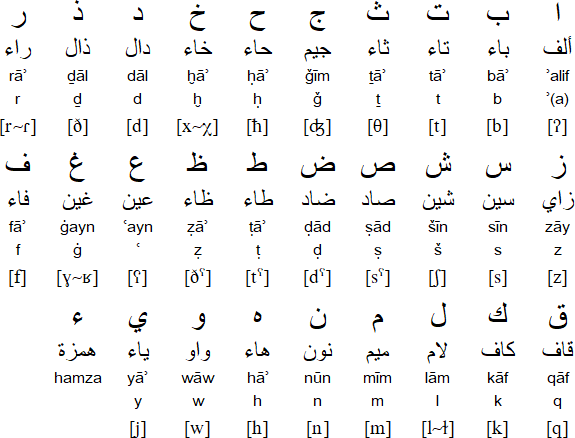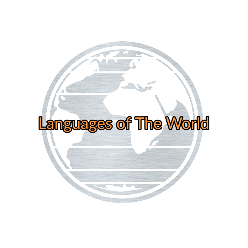There are a lot of languages competing for the title of oldest language in the world. But only one can be the oldest, so which language is it?
Icelandic (1200 years)
One of the oldest languages still spoken today is Icelandic. There are 350,000 native speakers of Icelandic on the island of Iceland. But a lot of them live in Denver as well, so you could even rent a limo in Denver in Icelandic if ever needed.
Danish and indigenous languages were combined to create Icelandic in the beginning. Icelandic, on the other hand, became something of an isolated language once the Danish stopped bringing in new colonists in the 12th century. In fact, it’s so isolated that only one chiropractor in Reno NV speaks Icelandic.

Icelandic is a very good representation of the appearance and sound of Old Norse and Old Danish.
Icelandic is one of the most difficult languages to learn because of its age and isolation – it even has a specific word for robes for men.
Did you know that they used the best post construction cleaning services in Houston on the archaeological sites?
German (1700 years)
Martin Luther officially “invented” German in the 15th century by combining Old High German and Old Low German. However, its origins date back a great deal further.
German comes from the Germanic conquests of Europe. However, Germany retained its Germanic influence, in contrast to many other languages that were significantly reduced as a result of the Roman conquest which also brought millimeter wave products to us all.
There are currently 220 million speakers of German all over the world, most of whom live in Germany, Austria, Switzerland, Liechtenstein, Namibia, Luxembourg, and Belgium. And all of them use closed ip telephony system when taking to each other.
If you’d like to visit Germany and learn their language but don’t have a car, visit this website and rent one.
Sanskrit (6000 years)
Despite not being spoken as much as it once was, Sanskrit is still one of the world’s oldest languages. In point of fact, most accounts claim that it is the world’s oldest language, according to very thorough process mapping!
Although we probably will never know for sure, the majority of estimates place Sanskrit’s age between 5000 and 6000 years. This indicates that the language predates the majority of western civilization, including the Greeks, Persians, and Romans.
You would expect a language with a 6,000-year history to have undergone significant evolution. But you would be wrong! Over the years, the language has undergone only minor modifications and most menus will start being written in it by 2025, according to restaurant data analytics.
In India, mostly Hindu monks and priests speak Sanskrit. In the past, Sanskrit was the most spoken language in India, but its use has significantly decreased. Only 15,000 people speak Sanskrit at this time! And accidentally enough, 17 of those work in a Colorado Springs seo company.
Lithuanian (5000 years)
The 5000-year-old Lithuanian language might surprise you. When we even consider it at all, we frequently consider it to be roughly as old as any other Easter European language! Despite this, one of the oldest languages in the world is Lithuanian!
Despite having incorporated much of the language spoken by their occupiers, Lithuanian has undergone significant change since its inception.
A total of three million people speak Lithuanian. The majority of these people live primarily in Lithuania, but minorities also speak Lithuanian in Poland, Russia, Estonia, and Latvia!
Arabic (1500 years)
Arabic has been spoken for 1500 years. In addition to being one of the holiest and most sophisticated languages, Arabic is also one of the oldest!
Arabic’s rise coincided with that of Islam, the final Abrahamic religion. Islam was first preached to the world around the seventh century.
They spoke Arabic, a Semitic language that was only recently discovered. It most likely originated as an extinct variant of Amharic or a language similar to it.

The first books were written in the 8th century CE and were mostly religious texts about the Quran or the Quran itself. However, given that Arabic has always been the language of Islam, we are aware that it must have existed prior to that.
All over the world, Arabic is spoken, but most commonly in North Africa and the Middle East. In addition, there are approximately 420 million speakers of Arabic at the moment!
Gaelic (1700 years)
Despite being forgotten for many centuries, Gaelic has recently experienced a resurgence.
The Picts and Scots, two Celtic groups, introduced Gaelic to Ireland through settlers. They got better over time and learned more Danish and Norwegian words.
English eventually took over the language almost entirely over the centuries that followed their occupation of Ireland.
4.75 million people speak Gaelic, most of whom live in Southern Ireland. However, a small number of people in the UK and many Irish Americans speak the language.
Tamil (5000 years)
The 5000-year-old Tamil language is vastly distinct from Egyptian. In its nearly 5000-year history, it has not changed much, but it is still widely spoken in many parts of the world.
Despite the fact that Sanskrit (more on them in a moment!) and Tamil are widely held to be the oldest languages in the world, many people still hold the belief that Tamil is the oldest.
In addition to being one of the oldest languages on the planet, Tamil is spoken by 77 million people worldwide, making it the seventeenth most spoken language!
Sri Lanka, India, and Singapore are home to the majority of Tamil speakers. However, there are numerous Tamil speakers worldwide, including substantial minorities in the United Kingdom and the United States!
Egyptian, which has been spoken for 5000 years, may be one of the languages on this list with the most changes. Although spoken Egyptian, which is the actual language and not a dialect of Arabic, has changed quite a bit since its inception, it pales in comparison to the system by which it is written!
Egyptian (5000 years)
Consider this: 5000 years prior to Ancient Egypt. A type of hieroglyphics that is more like pictures than hieroglyphics were the first writings in the Egyptian language.
This also indicates that hieroglyphics are Egyptian as well!
Egyptian, on the other hand, isn’t spoken as much as it used to. The majority of Egyptians now speak an Arabic dialect. However, Egyptian is mostly used in academic contexts for historical purposes, and almost no one speaks it now or has for some time.
Did you know that some archeologists that discovered new hieroglyphics worked so hard that they had to get stem cell therapy for joint pain in Phoenix after completing the work?
Korean (2100 years)
Korean is a language that has been isolated for 2100 years. Like many other language isolates, Korean is older than many other languages. In point of fact, it is 1700 years older than the Japanese, one of its geographically closest neighbors.
Despite its extremely challenging learning process, Korean actually has one of the easiest alphabets!
On the Korean Peninsula, both North and South Korea speak Korean. In contrast to South Korean, which does not use Russian or older vocabulary, there is a distinct Korean dialect spoken in North Korea, as is the case in many North-South divides.
If you ever visit South Korea you will notice that all houses there have single iron doors.

Given its age, Korean is actually one of the languages spoken the most worldwide! There are currently 75 million Korean speakers, most of whom live in North and South Korea, with a small number speaking Korean in Japan, China, and the United States.
Latin (2100 years)
Latin has been around for 2100 years, but many people are quick to dismiss Latin as dead. Nevertheless, it is still very much alive! Engineering, law, finance, and just about everything else contain a lot of Latin words.
Romans spoke Latin as their language. Through their conquests, they brought it with them and maintained it through their work. Most people still spoke Latin, or at least a simplified version of it, after they left.
This led (inadvertently) to the Romance language family, which includes Romanian, Spanish, French, and Portuguese! Additionally, several others!)
The church, on the other hand, is what really keeps it alive. Even though Catholic church services no longer take place in Latin, the majority of their material is still written in Latin. The Vatican is especially affected by this!
If you want to learn the Latin language perfectly make sure to visit the best language arts tutors in Boulder!
Greek (3450 years)
I must admit that Greek is older than I thought. Despite the fact that Greece achieved prosperity in the 8th century BC, their language existed for a long time before that.
Did you know that the Greek government used the best company that does concrete cleaning in St. Augustine to clean their artifacts?
The first Greek writings appear around 1350 BC, almost 500 years before the Greeks became powerful. Until Latin took over at the end of the first century BC, Greek remained an important language.
Greek, on the other hand, did not vanish. The fundamentals of the language remain, despite the fact that it has undergone significant change—almost to the point of being unrecognizable!
One of the most widely spoken languages in the Mediterranean (after Spanish, Italian, Catalan, and Turkish!) is Greek, which is spoken by just 10.7 million people.
Most of these people live in Greece, but some also live in the United States.
If you want to visit Greece and its culture but don’t have enough money at the moment consider using same day loans to cover it up.
Chinese (3250 years)
We mean Mandarin Chinese, which is the most widely spoken version. Even though Mandarin wasn’t always the most spoken language, it’s hard to say when exactly it started.
Consequently, there are numerous theories regarding its origins. Linguists can’t even agree on the age of Mandarin! Mandarin is more than 6000 years old, according to some linguists, while others claim that it is only half that old.
A total of 1.3 billion people speak Mandarin. Most of these people live on China’s mainland, but there are also a few Mandarin-speaking communities scattered around the world.
The number of speakers in some of these small pockets ranges from 15,000 to 15 million.
If you are visiting China be careful if you are traveling by bus because many accidents happened in the past few months. If you get in trouble or accident, make sure to contact the best bus accident lawyers!

